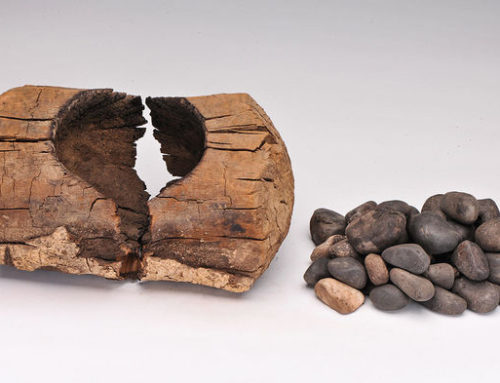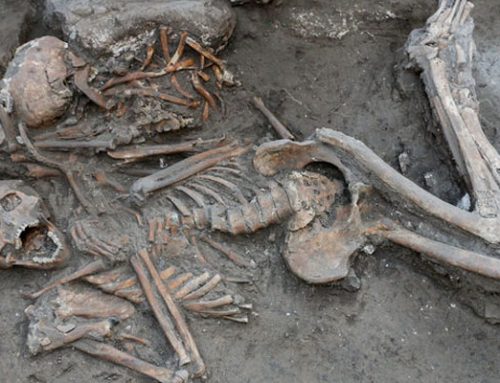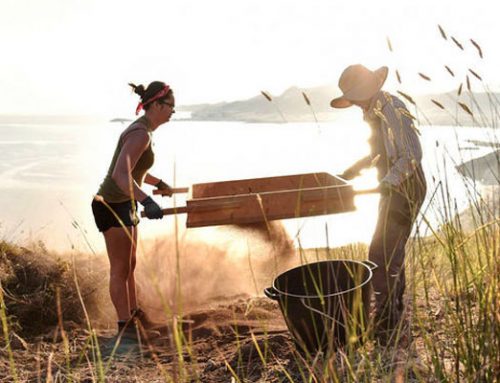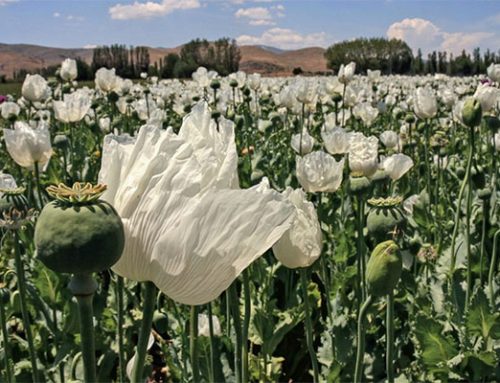Fortified coastal settlements suggest that the Indus Civilization, once considered an insular society, shipped goods to the east
DHOLAVIRA, INDIA—Most of the year, this small island near the Pakistan border is surrounded by thick salt flats in the estuary called the Rann of Kutch. In late January, the midday heat is already intense, and the land is brown and barren. Yet more than 4000 years ago, architects and engineers designed a vast city here with high stone battlements, deep wells, huge water basins, and wide and straight streets. Extending over 100 hectares and excavated only in the 1990s, the site was clearly an important metropolis during the height of the Indus River, or Harappan, civilization.
And yet Dholavira is hundreds of kilometers from the cities long considered the heart of the Indus River Valley civilization, Harappa and Mohenjo Daro, which lie far upstream on the Indus River in modern-day Pakistan. But recent digs and surveys in India’s westernmost province of Gujarat show that sites like Dholavira may be the critical link between the heart of the Indus and Arabia and Mesopotamia in the 3rd millennium B.C.E. At a recent conference in the nearby city of Bhuj, archaeologists compared notes on the mounting evidence that this area played an important role in long-distance trade at the dawn of civilization. “There are more than 60 Harappan sites in Kutch,” says Y. S. Rawat, head of archaeology in Gujarat Province. “Most are near the coast, and some are heavily fortifi ed.”
There’s no doubt there were maritime connections; Indus seals and artifacts have been found on the Arabian coast and in Sumerian port cities like Ur (see p. 1092). And although evidence of foreign material in Indus sites is scarce, seals from the area around today’s Bahrain on the Persian Gulf coast have been found at a small site called Lothal, 50 kilometers east of Dholavira and 270 kilometers from Mohenjo Daro. In 1954, Indian excavators here unearthed a massive brick-lined basin that they claimed was a harbor bordered by warehouses. Twice as long as a football fi eld and nearly 40 meters wide, the structure was built in the second half of the 3rd millennium B.C.E., the heyday of trade with the West. But many Western archaeologists don’t think it was a harbor. “It was a tank” for storing water, insists Gregory Possehl, an archaeologist at the University of Pennsylvania. An Italian team led by Dennys Frenez of the University of Bologna in Italy hopes to resolve the matter; recently, they found hints that a wide canal connected the basin with the sea, supporting the port theory.
 |
| Indus passports? Kanmer’s odd-shaped pendants may have been related to trade and travel. |
Meanwhile, a team of Japanese and Indian excavators is focusing on a fortifi ed village called Kanmer that likely housed between 400 and 500 people during its heyday between 2600 B.C.E. and 1900 B.C.E. Behind 20-meter-thick and 10-meter-high walls, residents were busy making tens of thousands of beads from many kinds of stones, such as carnelian, lapis, and agate, which were used in jewelry exported across the region. They also found three unique round pendants carrying Indus script and the familiar Indus image of the unicorn. Dig director Toshiki Osada, an archaeologist with Kyoto’s National Institutes for the Humanities, believes the pendants might be a kind of passport used in trade.
In recent years, dozens of Indus sites have come to light in this coastal area, which was once considered on the distant periphery of the Indus. Most are modest in size like Kanmer. “We’re fi nding small sites with massive fortifi cations, where raw materials are stored,” says Osada. He suggests that these settlements were an important link in the chain of commerce reaching from the Himalayas to Mesopotamia. Such fortifications are rare elsewhere in the Indus. Kuldeep Bhan of India’s Maharaja Sayajirao University of Baroda, who is excavating a nearby site called Shikarpur, says that the fortifi cations could be a sign of confl ict with locals who refused to adopt Indus ways, or the walls may have helped to protect goods from attackers by land or sea. “Craft may have been heavily controlled,” he says. Even today, Bhan notes, there are closely held secrets in Gujarati bead production. Just as excavators in Arabia are seeking the port where Indus traders unloaded their pots, Bhan hopes to fi nd clear evidence of maritime life at Shikarpur, which sits within a few kilometers of the sea. He has found a dozen or so Indus seals but is on the lookout for material that might hint at the multicultural nature of a port town. One of the great mysteries of the 3rd millennium B.C.E. is who built and sailed the ships that connected the Indus, the Persian Gulf, and Mesopotamia. Excavators like Bhan hope this harsh landscape will soon reveal their identities.
–ANDREW LAWLER
PROFILE: MAURIZIO TOSI
 |
| Cold warrior. Tosi successfully lobbied for a new view of ancient Asia. |
‘The Cobra’ Uncovers Ancient Civilizations— And Cold War Political Secrets
He told colleagues he was looking for ancient lapis lazuli mines. But when Maurizio Tosi crossed into Afghanistan at the height of the war between the Soviet Union and the mujahed in in 1984, his real goal was to locate wooden boxes that had once contained American-supplied Stinger missiles. Those missiles threatened Soviet helicopters, and Moscow was eager to trace the route they had taken into Pakistan.
As Tosi tells it, Soviet operatives asked him to investigate, and the dutiful Marxist, who is also a University of Bologna professor, went to Pakistan and crossed by car into southern Afghanistan, then controlled largely by rebels. Instead of Stinger boxes, however, he saw only masses of child graves, and he decided to swear off the spy business, in which he had participated off and on for 2 decades.
Tosi has been a peripatetic and infl uential archaeologist, excavating from Iran to Sicily and shaping new ideas about how humans fi rst began to live in cities and trade over vast areas. As a young man, he dug at Shahr-i Sokhta in southeastern Iran, exposing one of the world’s largest urban centers in the 3rd millennium B.C.E., far from the known big-three civilizations of Egypt, Mesopotamia, and the Indus. And in 1981, he discovered Indus material in Oman, sparking a revolution in archaeology in that country, and he continues to study connections between the Indus and Arabia (see main text, p. 1100).
The son of a senior government offi cial in Mussolini’s fascist Italy, Tosi turned communist as a teenager in Rome during the 1960s and studied paleontology and archaeology. By then, he says, he had already been recruited by the Cominform, the organization that coordinated efforts among Soviet-infl uenced communist parties. Tosi says he only performed “four or fi ve operations.” But the communist connection also served his professional life. A 1969 visit to Moscow introduced him to Soviet archaeologists who were making important discoveries in Central Asia, contacts that proved infl uential in Tosi’s later ideas about interconnected societies.
When Tosi and the late Serge Cleuziou of the French National Center for Scientific Research in Paris began to work in Oman in the 1980s, they abandoned the old way of seeing the emergence of civilization from a center to a periphery. Instead they postulated a network of linked societies including Mesopotamia, Arabia, Central Asia, and the Indus, each with a unique culture but sharing goods, ideas, and technologies. Tosi helped create a regular conference to discuss what he named the Middle Asian Interaction Sphere, and the idea, once considered fringe, is now mainstream.
Tosi’s politics, sharp mind, many wives (including a former Soviet political commissar), and often-brusque personality make him a controversial fi gure. “A brilliant monster,” says one colleague, who declines to be named. Although he has many enemies, few dispute his intellectual capacity. Tosi revels in what he claims is his nickname in the field—the cobra. In his many intellectual contests, he claims victory. “I’ve been in so many battles and never lost a fi ght,” he boasts.
“Maurizio’s contributions have been immense,” says archaeologist Philip Kohl of Wellesley College in Massachusetts. “He’s one of the smartest and most knowledgeable persons I’ve ever met, but I also feel he could have accomplished even more if he had control over his personal life. But then he wouldn’t be Maurizio.”
A heart operation has slowed Tosi of late, but during a recent visit to India he was busy organizing a meeting to bring modern experts in port facilities together with archaeologists to understand how ancient Indus harbors may have operated—and by so doing, forge economic connections between today’s Italy and India. “You must have an open mind,” says Tosi. “I’m just curious.” –A.L.




